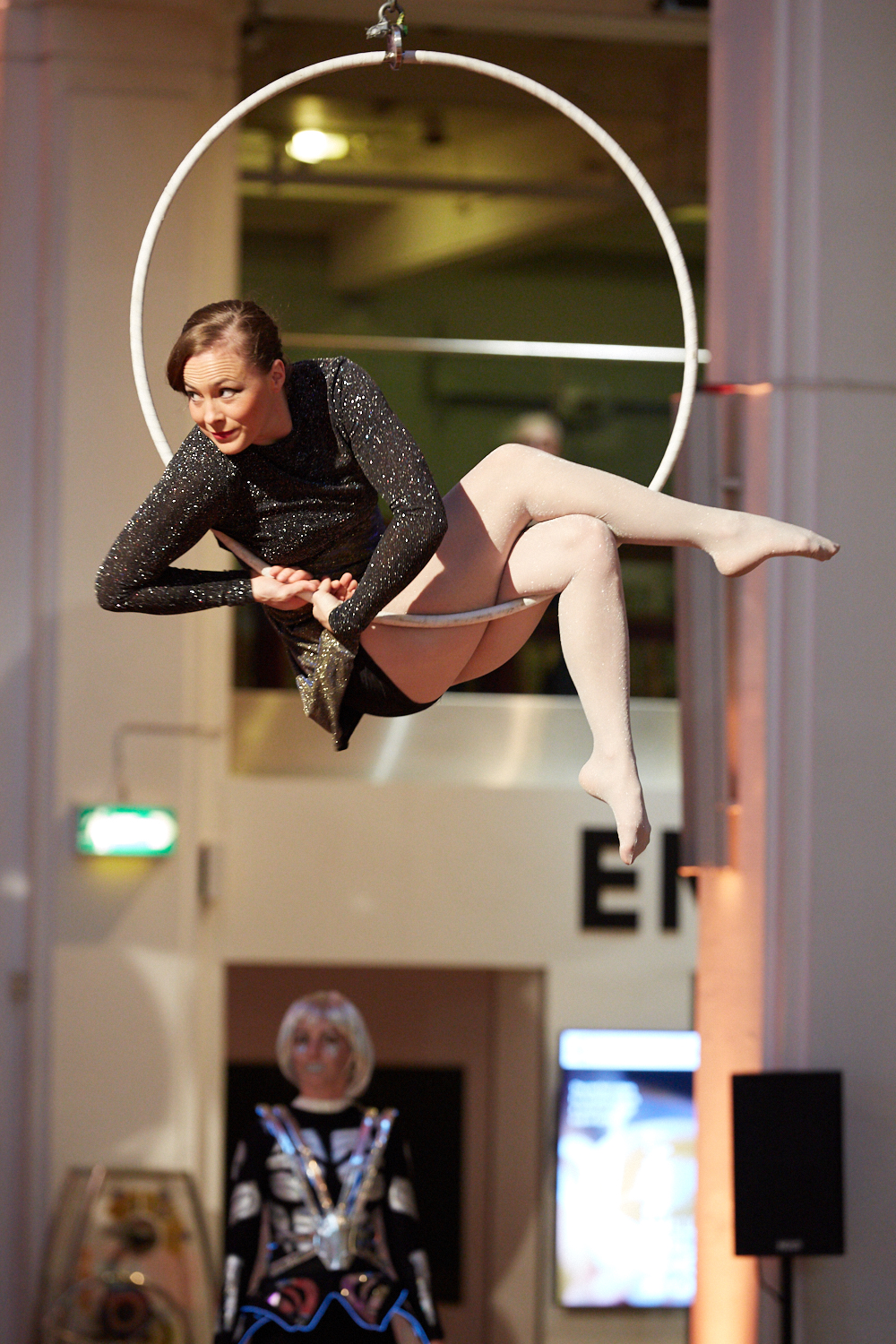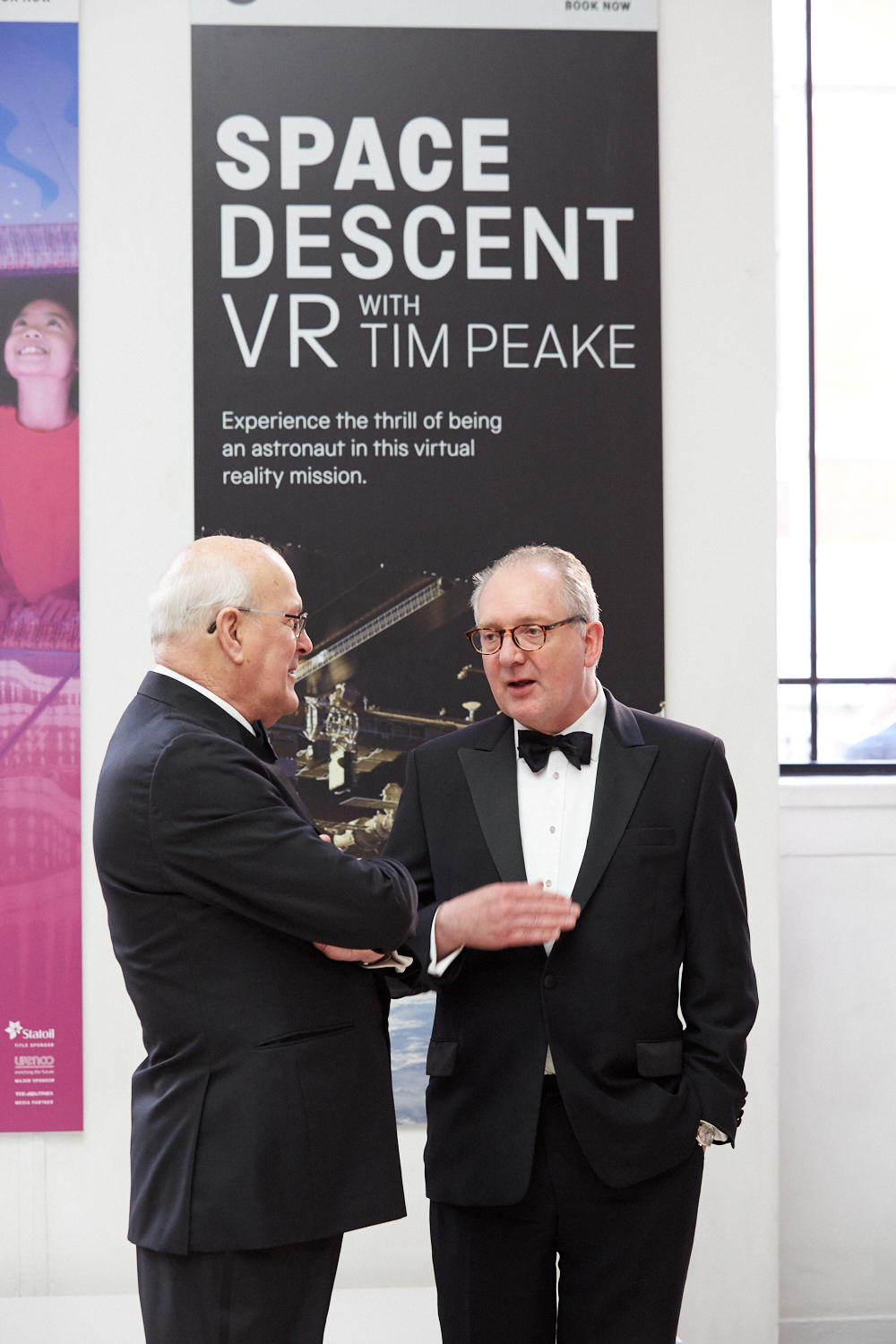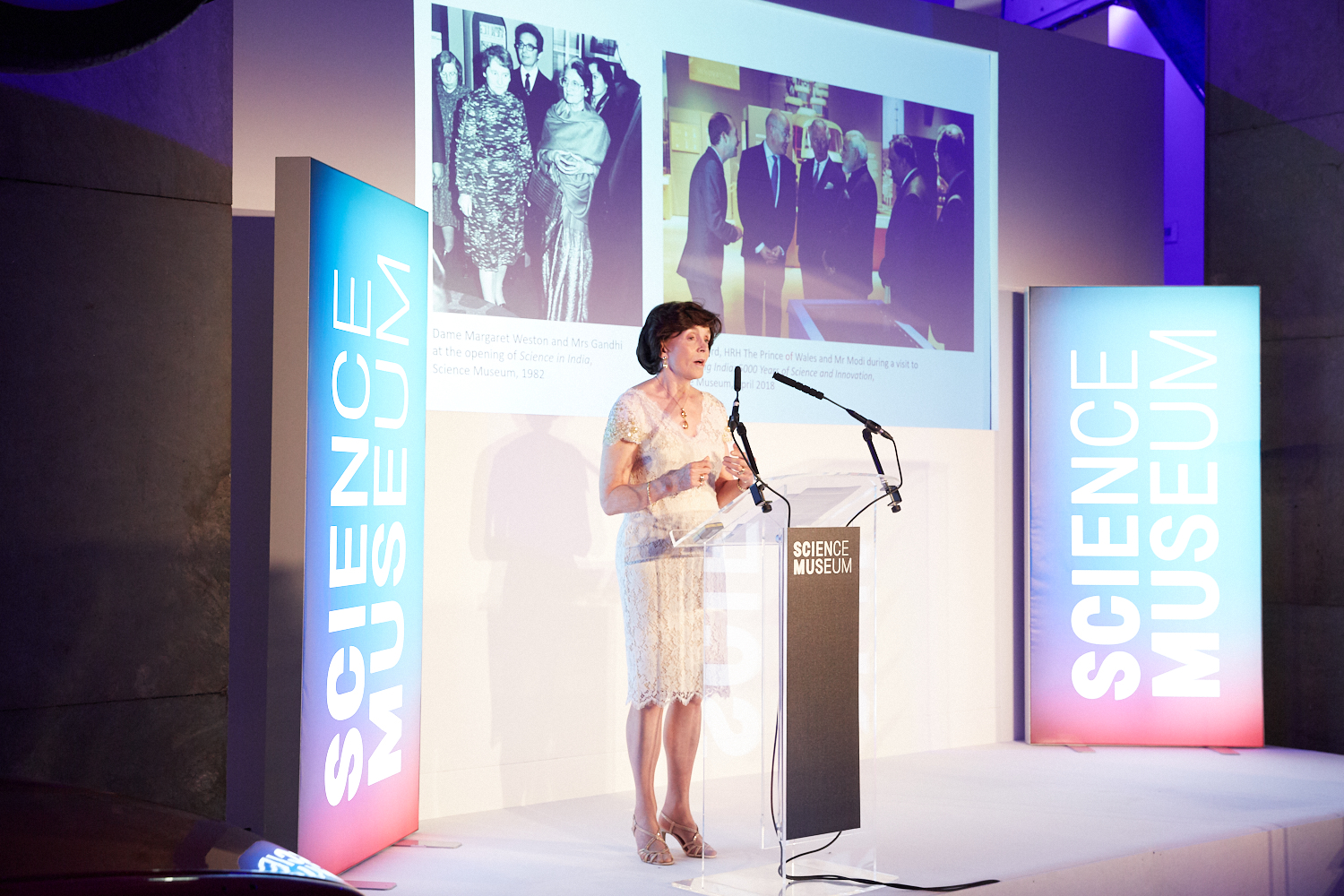A glimpse into the future of machines, ones made of molecules, was given last night by a Nobel prize-winner at the most glittering event in the Museum’s calendar, the Director’s Annual Dinner.
Guests ranged from the bosses of research councils to royalty and were welcomed with a theatrical display of acrobats, jugglers and stilt-walkers all led by Ringmaster Dea Birkett, head of Circus250, a celebration to mark 250 years of the circus.

The host was Jo Quinton-Tulloch, Director of the National Science and Media Museum in Bradford, who spoke about the collective ambition across the Science Museum Group ‘to be bold and inspirational’ and harness ‘groupness’, where the group is greater than the sum of its five museums.
Alluding to the ingrained connection between the circus and the Group’s aspirations, Quinton-Tulloch said: ‘We all love to be entertained; we all love to be amazed; we seek inspiration from others who show us what we might achieve.’ And it is the Science Museum Group that ignites ‘the spark that shows what [you] could do in science and technology’.

The keynote speaker at the event was Scottish scientist, Sir Fraser Stoddart, Board of Trustees Professor of Chemistry at Northwestern University, whose work on molecular machines led him to share the Nobel Prize in Chemistry in 2016 with Ben Feringa and Jean-Pierre Sauvage.
Credited by the Academy with ‘taking chemistry to a new dimension’ in the design and synthesis of molecular machines, Sir Fraser took the distinguished audience on a whistle-stop tour of the evolution of machines, from steam, to rocket, to molecular, both natural and made in the laboratory.

And how appropriate, as Sir Fraser rightly pointed out, to be discussing engines through the ages within a gallery that houses Stephenson’s Rocket and the Apollo 10 command module among other marvellous machines.
In 1991 Sir Fraser began his work by threading a molecular ring onto a thin molecular axle and demonstrated that the ring was able to move along the axle. Among his developments based on his ‘rotaxanes’ are a molecular lift, a molecular muscle and a molecule-based computer chip.

Director of the Science Museum Group, Ian Blatchford, led the black-tie audience on a journey through the year’s highlights, including the ‘fantastically popular’ Illuminating India season which was celebrated with a joint visit from the Prince of Wales and Prime Minister Modi; and Superbugs: The Fight For Our Lives. He then looked ahead at some of the exciting exhibitions and galleries that will be opening over the next few years.

Blatchford also celebrated the unpredictability of social media, referring to the ‘delightfully unscripted’ Twitter battle between the Science Museum and its neighbouring Natural History Museum, all of which was instigated by a member of the public. The twitter thread was viewed by 2.3 million people.

Finally, Dame Mary Archer, Chair of the Board of Trustees, presented a Fellowship to the Museum, its highest accolade offer, to four individuals who have made key contributions.
The first fellowship was awarded to HRH Princess Royal for her tireless efforts in encouraging young people, especially women, to consider careers in science and engineering. No stranger to the museum, the Princess Royal said she was ‘astonished’ and ‘touched’ to receive this honour. She spoke of the importance of innovations in science, technology, engineering and maths in ‘changing the way we live our lives to make them healthier and more worthwhile’.

The second fellowship went to Dr Kartar Lalvani, founder and chairman of Vitabiotics, the first ever vitamin company to receive the Queen’s Award for Innovation. Dr Lalvani, who fondly recalled the time he spent half a century ago at the Science Museum, said it was an ‘immense honour’ and ‘truly one of my life’s greatest privileges’ to accept the Fellowship. He praised the museum for ‘continually works to engage and inspire new generations of scientists’.

Sir Mark Walport, Chief Executive of UK Research and Innovation, UKRI, was the third recipient of the Fellowship and remarked that it was ‘humbling’ to receive it in ‘this extraordinary museum.’
Previously the Government’s Chief Scientific Adviser, Director of the Wellcome Trust and Professor of Medicine at Imperial College, Sir Mark spoke of the extraordinary environmental challenges we collectively face that can only be tackled through science and engineering and highlighted the surprising importance design and art play in facing these challenges in their ‘ability to humanise’ technology.

The final fellowship of the evening was awarded to Dame Margaret Weston in absentia, a former Director of the Science Museum and the first woman ever to direct a national museum, who laid the ‘foundations of the Group we know today’, said Dame Mary, and whose ambitions both in inspiring younger generations and strengthening international relationships still echo.
Among the glittering crowd of VIPs in attendance were British Astronaut, Helen Sharman (Sir Fraser was her chemistry tutor), Lady Helen Hamlyn, Emmy award winner Anthony Geffen, Tej Lalvani of Dragons’ Den and TV presenter and doctor Kevin Fong.